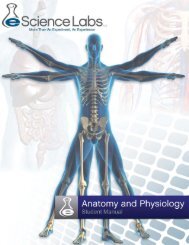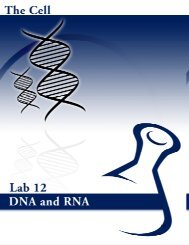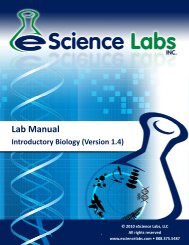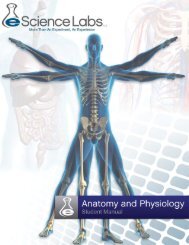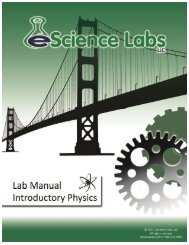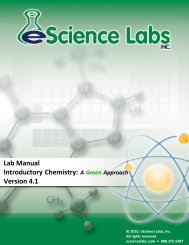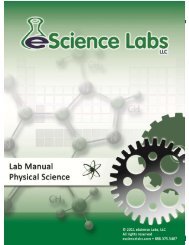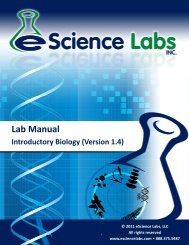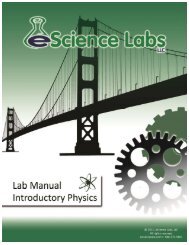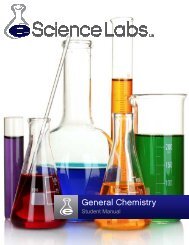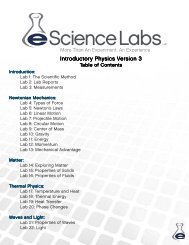Lab Manual - eScience Labs
Lab Manual - eScience Labs
Lab Manual - eScience Labs
Create successful ePaper yourself
Turn your PDF publications into a flip-book with our unique Google optimized e-Paper software.
<strong>Lab</strong> 13: DNA & RNA<br />
Concepts to explore:<br />
• DNA structure<br />
• Nucleodes<br />
• Amino acids<br />
• Proteins<br />
• Genec code<br />
• Mutaon<br />
Concepts to explore:<br />
• RNA<br />
• Transcripon<br />
• Translaon<br />
Introducon<br />
Long before we had any understanding of how, we knew that traits were<br />
passed on from generaon to generaon. We knew traits were expressed<br />
as heritable proteins, but we had no idea of the mechanism.<br />
Whatever the mechanism, it needed to meet three criteria:<br />
• It needed to carry informaon between generaons.<br />
• It needed to express that informaon.<br />
• It needed to be easily replicable.<br />
Prior to the 1950’s, there was much debate over what the structure of a<br />
molecule that met all three criteria would look like. Though a number of<br />
people made significant contribuons, in 1953 James Watson and Francis<br />
Crick won the Nobel Prize for their model of what we now know as DNA<br />
(deoxyribonucleic acid). The features of this model sasfied all of the<br />
necessary criteria.<br />
Figure 1: DNA Double Helix<br />
DNA takes the form of what is commonly referred to as a “double helix”, or perhaps more simply, a long<br />
twisted ladder with rungs (Figure 1). The sides of the ladder consist of a sugar-phosphate “backbone”<br />
and the strand itself has direconality. In other words, like the words on this page, there is a set order<br />
in which they are read. In the case of DNA, it is from the 5’ (five<br />
prime) to 3’ (three prime) end.<br />
Figure 2: Nucleodes<br />
The rungs of the ladder carry informaon in a sequenal series of four<br />
different nucleodes (small molecules): Guanine (G), Adenine (A), Thymine<br />
(T) and Cytosine (C). These nucleodes pair up in a very precise<br />
manner (specificity); A with T, and G with C (Figure 2). No other combinaons<br />
are ever made because of the chemical and electrical forces<br />
within the nucleode.<br />
141



